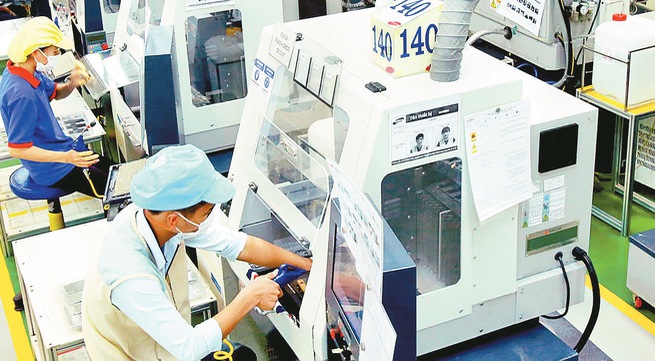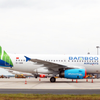New trend in selecting FDI capital

Right to refuse
One of the hot topics at investment forums in 2018 was the lobbying for a textile and dyeing project worth US$350 million by Chinese Hong Kong-based TAL Apparel in Ba Thien II industrial park, in the northern province of Vinh Phuc. This is a well-known investor in the world as one of every six shirts sold in the US includes one produced by TAL, and the group has invested in Vietnam since 2004.
The Government and the Ministry of Natural Resources and Environment (MONRE) have agreed in principle for this project, but the Vinh Phuc provincial People's Committee refused the project four times. TAL pledged to install a 24/7 waste water monitoring system to be connected to the MONRE online to control the quality of waste water, in addition to building a 40,000m² fish pond near the walls of the factory to prove the safety of the wastewater from the factory. However, the project was still not convincing enough.
“Recently, Ho Chi Minh City, Binh Duong, Da Nang and other localities have rejected textile and dyeing projects. Other localities that agree to such projects have no longer offered incentive mechanisms,” said Prof. Dr. Nguyen Mai, Chairman of the Association of Foreign Investment Enterprises.
Not only textile and dyeing projects are being rejected, projects in the areas of coal-fired thermal power and paper production also receive similar reactions. The leading FDI localities’ rejection of potentially polluting projects is considered a "wake-up" after a period of "competition to the bottom" to attract FDI at any costs.
The new FDI selection trend of localities is to receive FDI into industries and products with high intellectual and value-added content in order to implement the economic restructuring goal aligned with the new growth model.
The filter to welcome green capital flow
Agreeing with the viewpoint of selective FDI attraction, Dr. Nguyen Dinh Cung, Director of the Central Institute for Economic Management, wonders: if localities always refuse textile, dyeing and coal-fired thermal power projects, where will we get the supply of materials and accessories for the textile and garment industry to escape doing outwork and produce enough electricity supply in the future? The choice is up to localities, but it should be based on scientific criticism to make sure that we only refuse inappropriate projects.
In the context of selective attraction of FDI, the authorised agencies must strengthen the evaluation and supervision of investment projects, while setting out stricter requirements on technology standards and environment for investors.
In order to welcome green capital flow, the Ministry of Planning and Investment is developing a tool on FDI management including a specific set of indicators so that localities find it easier to approve or reject FDI projects, offer incentives, and evaluate the effectiveness of FDI projects. "Only based on a scientific, strict and transparent system, can Vietnam attract investment in a selective manner with spillover effects", said Minister of Planning and Investment Nguyen Chi Dung.
If the country knows how to filter and say no to outdated technology and unsustainable capital flows, Vietnam will catch up with the new trend of international capital flows and become the destination of high-tech capital.





